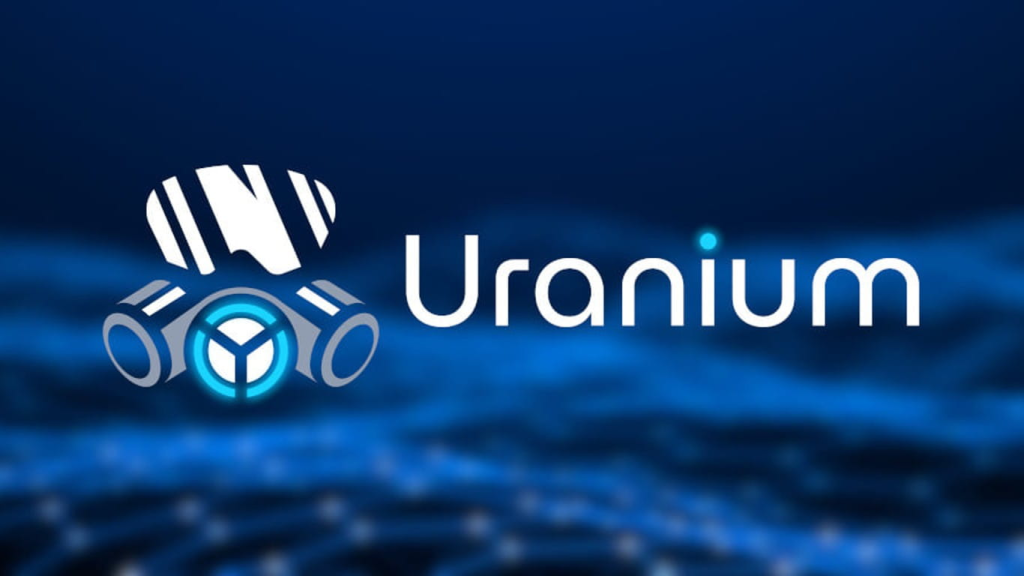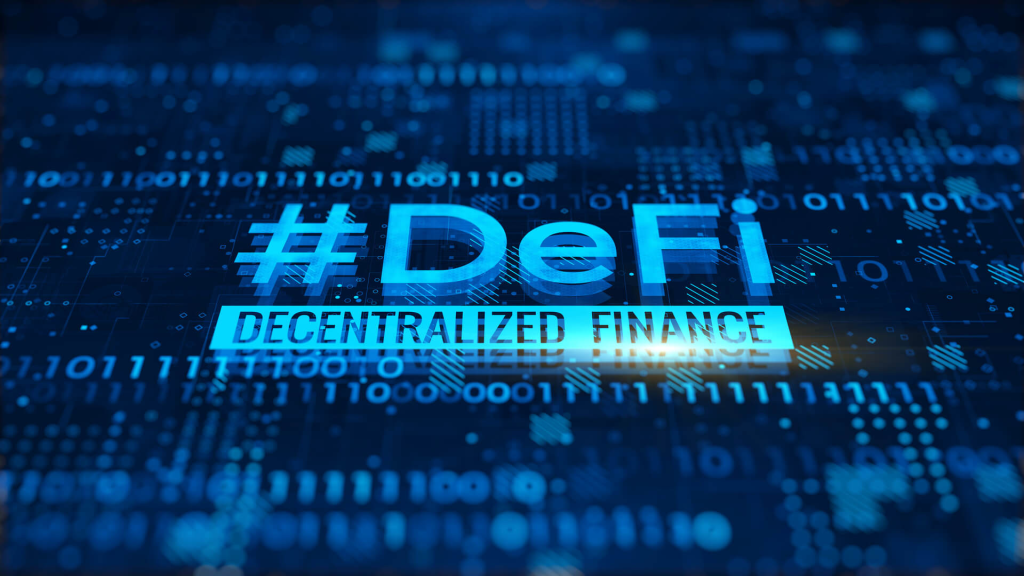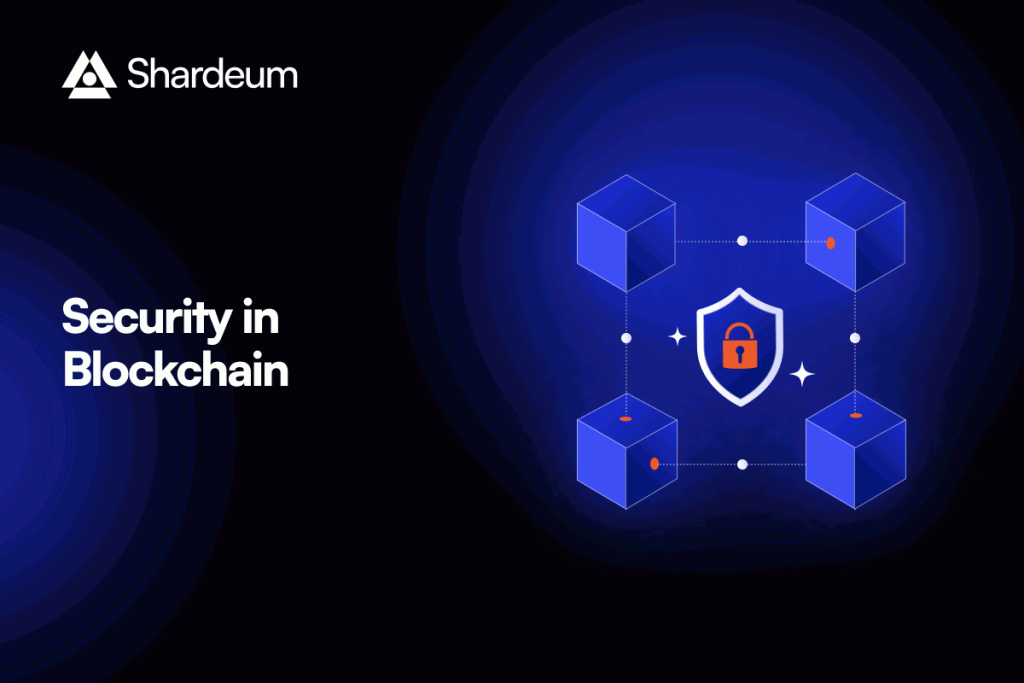A Comprehensive Analysis of the $31 Million Crypto Asset Seizure and Its Implications for DeFi Security

Hoplon InfoSec
04 Mar, 2025
Are you aware od US Seizes $31 Million Funds? The decentralized finance (DeFi) space has witnessed explosive growth in recent years, accompanied by groundbreaking innovations and significant security challenges. One of the most striking examples is the 2021 Uranium Finance exploit, where a critical flaw in a smart contract allowed attackers to siphon off $50 million from a Binance Smart Chain (BSC)-based decentralized exchange. Nearly four years later, U.S. law enforcement agencies announced the recovery of $31 million in cryptocurrency linked to the exploit—marking one of the largest seizures of DeFi-related assets to date.
This blog post explores the background of the exploit, the technical intricacies that enabled it, the sophisticated laundering methods employed by the attackers, and the advanced blockchain analytics that eventually led to the asset recovery. It also discusses the broader implications for the DeFi industry and offers recommendations for enhancing security.
Background of the Uranium Finance Exploit

In the burgeoning world of decentralized finance, security oversights can have catastrophic consequences. Uranium Finance, a project modeled on a fork of Uniswap’s automated market maker (AMM) protocol, fell victim to such an oversight. Despite undergoing a pre-launch audit that identified a vulnerability, the development team deployed the flawed v2.0 contract before implementing the necessary fixes. On April 28, 2021, attackers discovered a seemingly minor error—a single-line discrepancy in the “sanity check” function within the project’s pair contract code.
This error revolved around the misuse of numerical multipliers. While the contract used a multiplier of 1,000 for verifying token balances, the swap calculations were executed using a multiplier of 10,000. This 100x discrepancy created an exploitable loophole in the liquidity pools, enabling the attackers to perform swaps with extremely low input tokens while artificially inflating the reserves. Throughout the attack, funds were drained from 26 trading pairs that included key tokens such as Binance’s wrapped Bitcoin (BTCB), Binance USD (BUSD), and Ethereum (ETH).
The incident emulates the risks inherent in rapidly evolving DeFi projects, where minor coding oversights can lead to substantial financial losses. It is a powerful reminder that thorough testing and cautious deployment of smart contracts are crucial to safeguarding digital assets.
The Technical Exploit Explained
Dive into the technical details to appreciate the full scope of the exploit. DeFi platforms like Uranium Finance operate on automated market maker protocols, where smart contracts govern the interactions between buyers, sellers, and liquidity pools. These protocols use mathematical formulas to ensure asset prices adjust in real time as trades occur.
In this case, the exploit was made possible by a subtle but critical error in the contract’s balance verification process. The “sanity check” function, designed to ensure that token balances remained within expected parameters, mistakenly applied a multiplier of 1,000 for verifying balances while using a multiplier of 10,000 in actual swap calculations. This inconsistency allowed attackers to generate artificial conditions in the liquidity pools. By executing swaps with minimal tokens, they could manipulate the pool’s reserves to such an extent that they effectively drained significant amounts of cryptocurrency.
Exploiting this multiplier discrepancy demonstrates how a minor arithmetic error can lead to exponential fund extraction. For developers in the DeFi space, this case underscores the importance of meticulous code reviews and rigorous testing. Every line of code must be scrutinized to ensure that all calculations are consistent and error-free—a lesson that resonates across the entire blockchain community.
The Multi-Stage Laundering Process
After successfully exploiting the contract and draining funds, the attackers moved quickly to obscure the origins of their ill-gotten gains. Their laundering process was complex and multifaceted, desmultifacetede detection and complicating any forensic investigations.
Anonymizing Through Tornado Cash
The initial stage of the laundering process involved routing a significant portion of the stolen funds through Tornado Cash, an Ethereum-based privacy mixer. Tornado Cash is designed to break the transaction history on the blockchain, making it difficult for investigators to trace the flow of funds back to their source. By mixing the stolen assets—approximately 2,400 ETH valued at $5.7 million at the time—the attackers successfully disrupted the transaction trail, adding a layer of anonymity before further obfuscation.
Bridging Across Multiple Blockchains
Once the funds were anonymized, the attackers diversified their assets by bridging them to other blockchains. They converted part of the anonymized Ethereum funds to Bitcoin using cross-chain services. This diluted the concentration of the stolen assets on a single blockchain and complicated the task of tracking the money. The remaining funds were dispersed across various decentralized exchanges (DEXs) and centralized platforms. Some of these assets lay dormant in digital wallets for nearly three years, only to be reactivated in early 2024—a delay further confounded tracing efforts.
Unconventional Methods of Obfuscation
In a striking display of creativity, investigators later uncovered evidence that the attackers had employed even more unconventional methods to disguise the origin of the funds. Among these were cryptocurrency conversions within the blockchain game Magic: The Gathering. By converting digital assets via the game’s platform, the perpetrators introduced another layer of complexity to their laundering strategy, demonstrating their willingness to exploit every avenue to hinder tracking efforts.
This elaborate multi-stage laundering process highlights the evolving sophistication of cybercriminals in the DeFi space. Their ability to navigate between blockchains and employ various tools to obscure transaction trails presents a formidable challenge for forensic investigators.
Advanced Blockchain Analytics and Law Enforcement Tactics

Advanced blockchain analytics tools were the breakthrough in recovering a significant portion of the stolen assets. U.S. law enforcement agencies, spearheaded by the Southern District of New York (SDNY) and Homeland Security Investigations (HSI), leveraged cutting-edge technology to unravel the complex web of transactions.
The Role of TRM Labs Tactical Platform
At the heart of the investigation was the TRM Labs Tactical platform—a mobile-first blockchain analytics tool designed to trace illicit funds through multifaceted laundmultifacetedks. By analyzing historical transaction patterns and cross-referencing mixer outputs, investigators could map clusters of addresses linked to the exploit. One critical insight was the identification of dormant wallets that had received portions of the laundered BTCB and ETH. These wallets, which had remained inactive for long periods, suddenly exhibited activity, triggering heuristic models within the TRM system.
Once flagged, the movement of funds from these wallets was traced to custodial services operating under U.S. jurisdiction. The advanced capabilities of TRM Labs’ platform enabled law enforcement to recover $31 million in cryptocurrency—approximately 62% of the stolen funds. This achievement underscores the growing effectiveness of blockchain intelligence tools in tracing funds even when criminals use sophisticated methods to hide their activities.
Heuristic Models and Dormancy Analysis
A key feature of modern blockchain analytics is the use of heuristic models that analyze the behavior of digital wallets. In this investigation, these models were instrumental in detecting sudden activity in wallets that had otherwise been dormant. By identifying these anomalies, investigators could piece together fragmented transaction histories, linking seemingly isolated activities across multiple platforms and blockchains.
The success of this approach demonstrates that activity patterns can be detected and analyzed to reveal illicit behavior even in a decentralized and pseudonymous system. As the digital asset ecosystem grows, integrating such advanced analytical tools will be essential in combating cybercrime.
Implications for the DeFi Industry and Security Lessons Learned

The Uranium Finance exploit is a stark reminder of the inherent vulnerabilities present in decentralized finance systems. The incident has several far-reaching implications that extend beyond the platform’s immediate financial losses.
The Importance of Consistent Multipliers in Smart Contracts
One of the critical technical lessons from the exploit is the necessity for consistency in mathematical models used within smart contracts. The vulnerability’s cornerstone was the discrepancy between the multipliers used for balance verification (1,000) and those applied during swap calculations (10,000). This error allowed attackers to manipulate liquidity pools, resulting in exponential fund extraction. Developers must ensure that all parameters within a smart contract are rigorously tested for consistency and accuracy to prevent similar vulnerabilities.
Enhancing Real-Time Anomaly Detection
In light of the exploit, there is a growing consensus within the DeFi community on the need for real-time anomaly detection systems. Such systems would continuously monitor liquidity pool ratios and transaction volumes, flagging any irregularities before an exploit can be fully executed. Implementing these systems could provide an early warning mechanism, allowing platform administrators to intervene and potentially halt fraudulent activities before significant damage occurs.
Delaying Contract Upgrades for Thorough Post-Audit Reviews
Another important lesson is the potential danger of rushing contract deployments. Despite identifying the vulnerability during a pre-launch audit, the developers of Uranium Finance proceeded with deploying the flawed v2.0 contract. Instituting a mandatory delay between audit completion and contract deployment could allow developers sufficient time to patch identified vulnerabilities, thereby reducing the risk of exploitation.
Broader Security and Regulatory Considerations
The case raises broader questions about regulatory oversight in the rapidly evolving DeFi sector. While decentralized platforms offer numerous benefits, they pose unique challenges for regulators and law enforcement. Enhanced collaboration between technology developers, security auditors, and regulatory bodies is essential to develop and enforce standards that safeguard the interests of all stakeholders in the digital asset ecosystem.
Cross-Chain Attribution and Investigative Techniques
A particularly challenging aspect of the investigation was the need to perform cross-chain attribution. The stolen funds did not remain confined to a single blockchain; they traversed the Binance Smart Chain, Ethereum, and Bitcoin networks. This cross-chain movement required investigators to employ various techniques to correlate activity across disparate systems.
Linking Activity Across Blockchains
Cross-chain attribution involves analyzing transaction patterns and wallet behavior on blockchains to establish connections between seemingly unrelated addresses. In the Uranium Finance case, investigators used dormancy period analysis to identify wallets that had been inactive for long periods before suddenly registering significant transaction activity. By correlating this activity with data from blockchain mixers and custodial platforms, law enforcement was able to build a comprehensive map of the illicit fund flows.
Temporal Clustering Algorithms
Temporal clustering algorithms played a crucial role in detecting mixer residue—a pattern arises when funds processed through privacy mixers like Tornado Cash exhibit similar timing characteristics. Combined with heuristic models, these algorithms allowed investigators to identify clusters of transactions that were likely linked to the exploit. Such techniques are becoming increasingly important as criminals develop more sophisticated methods to hide their activities.
The Role of Advanced Analytics in Modern Blockchain Investigations
The successful recovery of many stolen funds highlights the transformative impact of advanced blockchain analytics on law enforcement efforts. Tools like the TRM Labs Tactical platform provide investigators with unprecedented insight into complex transaction networks that span multiple blockchains and jurisdictions.
Mobile-First and Real-Time Analysis and US Seizes $31 Million Funds
The mobile-first design of the TRM Labs platform enabled law enforcement agents to conduct real-time analyses, even in the field. This flexibility proved crucial in tracking the movement of funds as they shifted between dormant wallets, custodial services, and various exchanges. By integrating data from multiple sources, the platform provided a holistic view of the transaction history, which was instrumental in identifying key leads and ultimately recovering $31 million in cryptocurrency.
Collaborative Efforts and Future Developments
The investigation’s success underscores the importance of collaboration between technology providers and law enforcement agencies. As criminals continue to develop innovative methods to launder illicit funds, the tools and techniques used to combat these activities must evolve in tandem. Future advancements in blockchain analytics will likely include even more refined heuristic models, enhanced cross-chain tracking capabilities, and deeper integration with regulatory frameworks. These developments will be critical in maintaining the integrity of the digital asset ecosystem.
A Future Outlook on Blockchain Security

While the recovery of $31 million represents a significant victory, the Uranium Finance exploit is also a cautionary tale. As the DeFi industry continues to expand, the potential for similar vulnerabilities increases. Moving forward, the focus must be on enhancing security protocols, fostering industry collaboration, and investing in advanced monitoring systems.
Strengthening Security Protocols
Developers and auditors must work together to establish more rigorous security protocols for innovative contract development. This includes comprehensive testing, peer reviews, and real-time monitoring systems capable of detecting anomalies at the earliest stages. By prioritizing security at every step of the development process, the industry can reduce the risk of catastrophic exploits.
Embracing Innovation While Maintaining Vigilance
The dynamic nature of blockchain technology demands continuous innovation in terms of functionality, scalability, and security. Embracing innovative solutions, such as advanced blockchain analytics and artificial intelligence-driven monitoring systems, will be essential in staying ahead of potential threats. However, innovation must be tempered with caution and thorough testing to ensure new systems do not introduce additional vulnerabilities.
Regulatory and Community Collaboration
The challenges posed by decentralized finance require a coordinated response from all stakeholders. Regulators, developers, security experts, and users must engage in ongoing dialogue to develop best practices and establish standards that protect the integrity of digital assets. Enhanced regulatory frameworks can help platforms adhere to strict security guidelines, while community-led initiatives can promote transparency and accountability.
Conclusion
The recovery of $31 million in cryptocurrency from the 2021 Uranium Finance exploit marks a pivotal moment in the fight against cybercrime in the digital asset space. This case not only illustrates the technical vulnerabilities within DeFi platforms but also highlights the remarkable progress made by law enforcement in tracing and recovering illicit funds through advanced blockchain analytics.
Every aspect of the case offers valuable lessons, from the initial exploitation of a single-line error in the smart contract to the sophisticated multi-stage laundering process designed to obscure the transaction trail. The successful recovery of a substantial portion of the stolen funds demonstrates that modern analytical tools and collaborative investigative efforts can overcome even the most intricate laundering schemes despite the challenges posed by decentralized and pseudonymous systems.
As the DeFi industry continues to evolve, it is imperative that all stakeholders—developers, regulators, auditors, and users—remain vigilant and proactive in addressing security risks. The digital asset ecosystem can build a more secure future by investing in robust security protocols, embracing innovative monitoring solutions, and fostering a culture of transparency and collaboration.
Additional Insights and Best Practices for DeFi Security
Beyond the immediate technical and operational lessons, the Uranium Finance case provides broader insights for the entire DeFi community. One of the most crucial takeaways is the need for ongoing education and awareness regarding security best practices. Developers should prioritize code security by incorporating regular audits, utilizing open-source tools for peer review, and continuously updating their knowledge of emerging threats. At the same time, platform operators must invest in real-time monitoring systems that can quickly detect and respond to unusual trading patterns or liquidity pool anomalies.
Moreover, regulatory bodies are essential in establishing clear standards for innovative contract development and operational practices. As decentralized platforms continue to disrupt traditional financial systems, a collaborative effort between regulators and industry experts will create a secure, transparent, and resilient digital economy.
User education is equally important. Investors and participants in the DeFi space should be informed about the potential risks and the security measures implemented by various platforms. By identifying red flags and making informed decisions, users can help drive demand for higher security standards and contribute to a safer overall environment.
For more:
https://cybersecuritynews.com/u-s-seizes-31-million-funds-drained/
Share this :